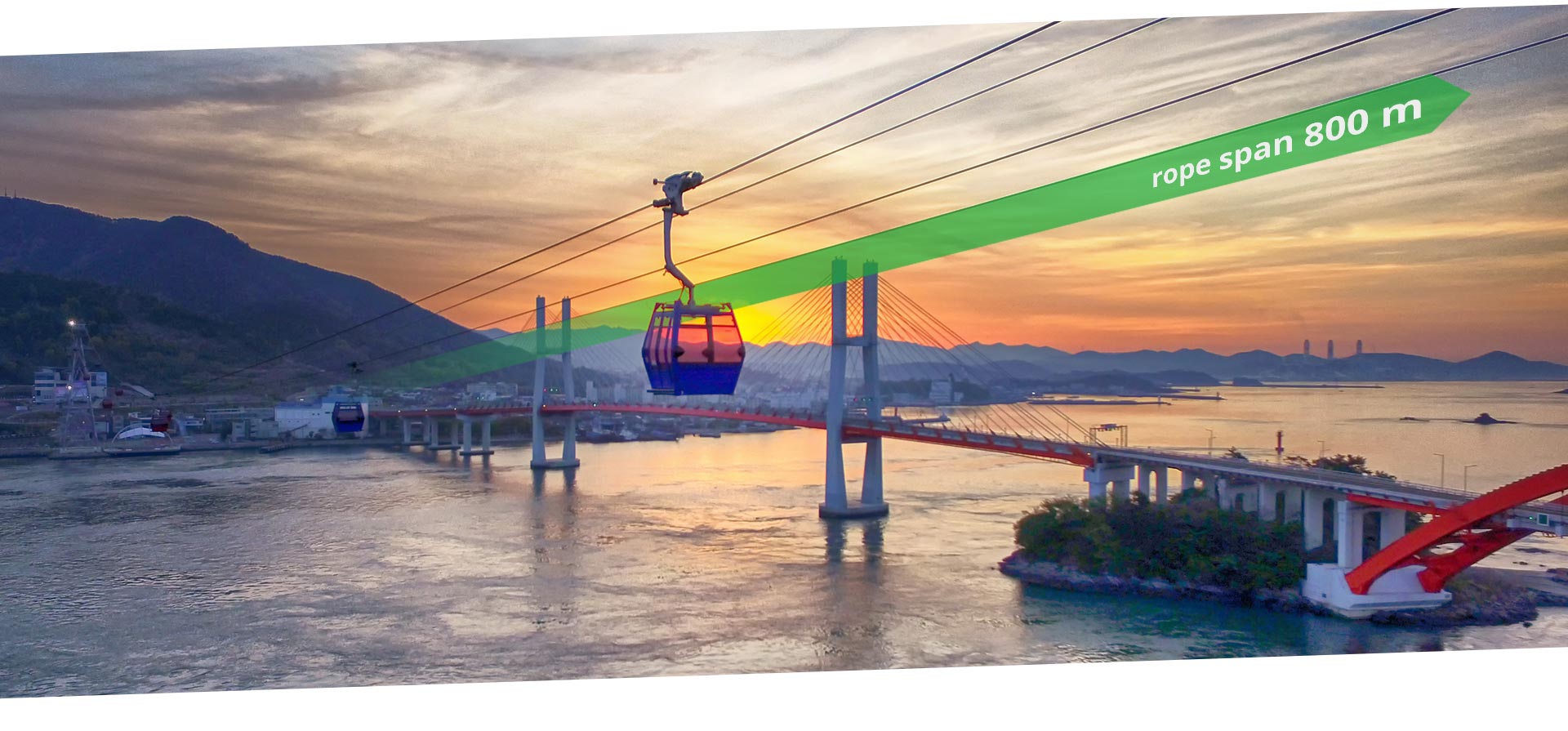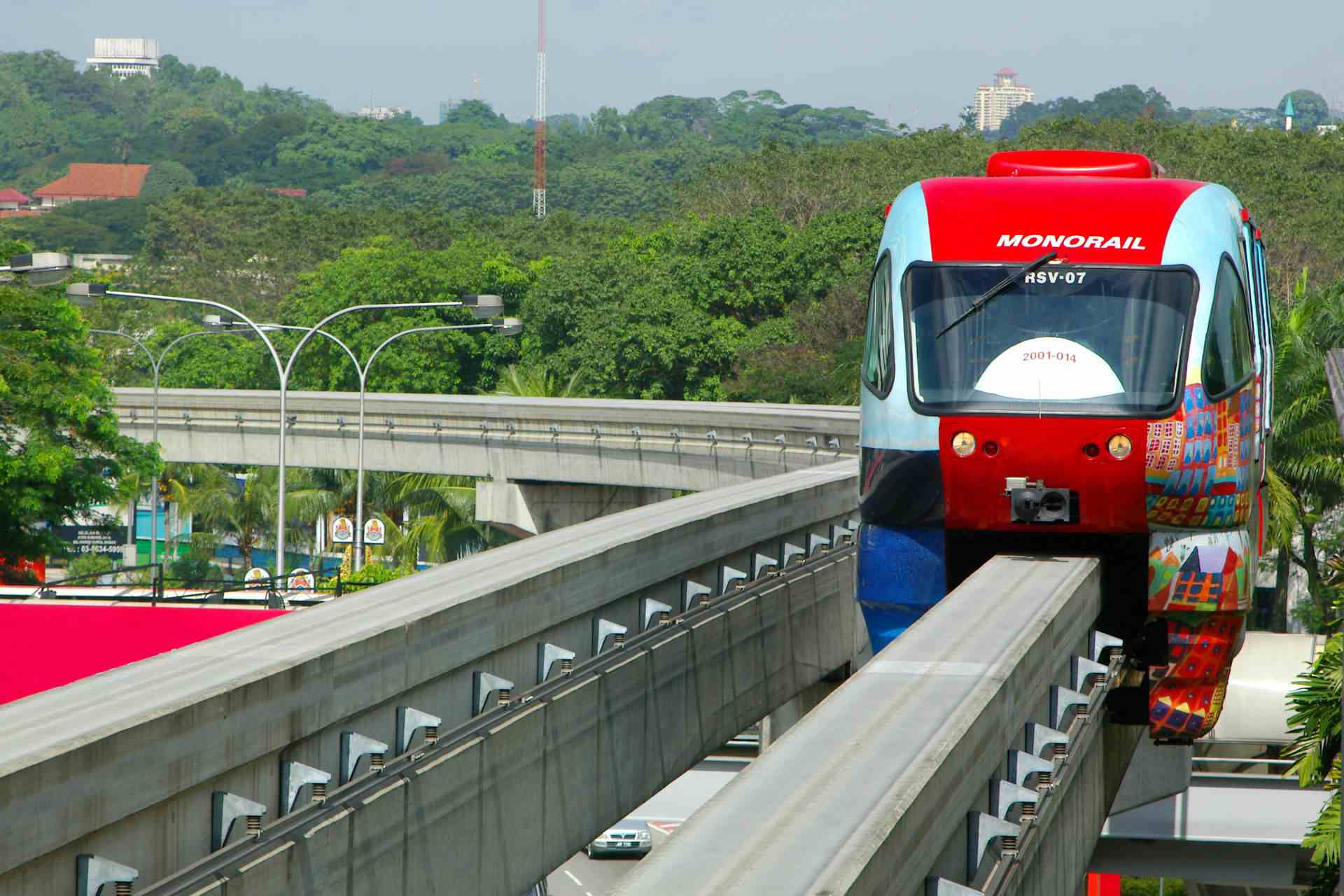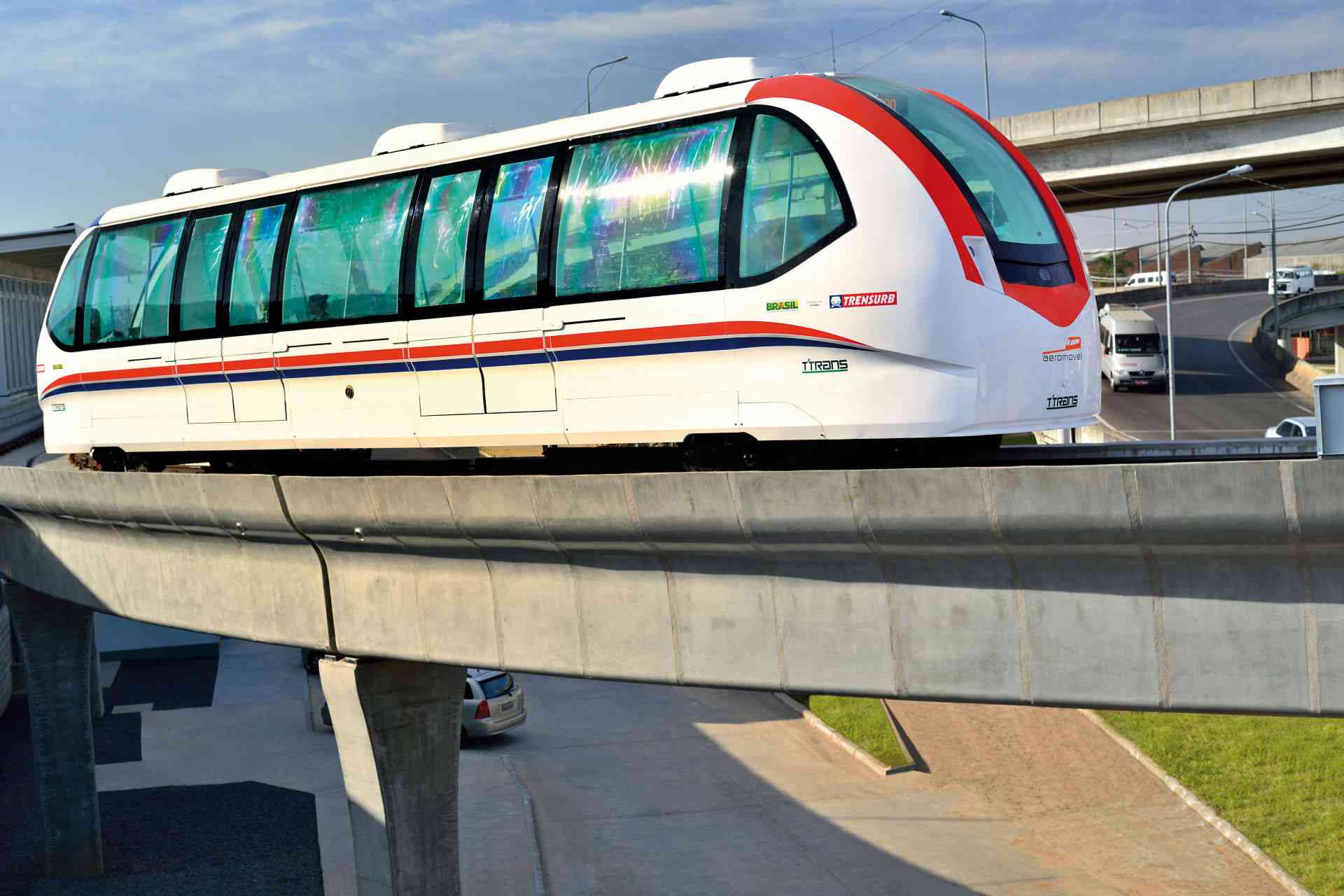
Monorail | Overhead Monorail | Suspension Railway | Atmospheric Railway
The monorail is also referred to overhead monorail, suspension railway or atmospheric railway depending on the construction type.
 The monorail is a system which runs on or under one single, narrow guideway beam – the classical monorail on it and the suspension railway below it. The guideway beam can have various shapes and can be made of all kinds of materials. The propulsion of monorails usually works with electrical motors on-board.
The monorail is a system which runs on or under one single, narrow guideway beam – the classical monorail on it and the suspension railway below it. The guideway beam can have various shapes and can be made of all kinds of materials. The propulsion of monorails usually works with electrical motors on-board.
Monorails are mainly used for 100% elevated guideways. In mega cities with more than 7 million inhabitants they represent a good possibility for creating a so called third level for the local public passenger transport network. In megacities, the acceptance in the city center is given, since the mobility needs of the people predominate and thus the supposed restriction of privacy, by vehicles passing windows, plays a minor role.
Construction projects can be carried out quite easily since the guideway is installed by using prefabricated parts. The guideways, impressing with a light appearance, fit well into the picture of urban sceneries.
 There are several bigger and smaller manufacturers of monorails, but the technology has not yet gained widespread acceptance. They were originally designed as powerful and cost-effective transport systems for elevated public transport. However, many downsized system designs, so-called “light monorails”, have also been implemented in the private sector (amusement parks, hotel and casino complexes, etc.).
There are several bigger and smaller manufacturers of monorails, but the technology has not yet gained widespread acceptance. They were originally designed as powerful and cost-effective transport systems for elevated public transport. However, many downsized system designs, so-called “light monorails”, have also been implemented in the private sector (amusement parks, hotel and casino complexes, etc.).
 An extremely rare solution is the overhead monorail or suspension railway. In this case, the track is located above the vehicle, which is suspended from it. Suspended monorails are considered as a subcategory of monorails.
An extremely rare solution is the overhead monorail or suspension railway. In this case, the track is located above the vehicle, which is suspended from it. Suspended monorails are considered as a subcategory of monorails.
Another special solution is the atmospheric railway. An atmospheric railway uses air pressure in a continuous duct of the guideway to propel the vehicles. Thus, the vehicles are passive and don’t depend on on-board drive equipment like e-motors or gearboxes. Drive plates are attached to the vehicles, which absorb the airflow in the concrete duct of the guideway. There is a sealed slot at the top of the concrete duct to provide a connection between the drive plates and the vehicles.